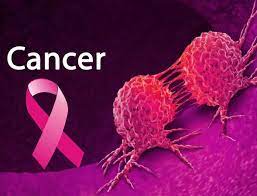Understanding Cancer: A Comprehensive Overview
Cancer is a complex and often devastating disease that affects millions of people worldwide. It’s crucial to have a comprehensive understanding of cancer, including its causes, types, symptoms, diagnosis, treatment options, and prevention strategies.
Causes of Cancer
Cancer arises from genetic mutations that result in uncontrolled cell growth and division. While the exact causes of these mutations are not always clear, several risk factors increase the likelihood of developing cancer:
- Genetic Factors: Inherited genetic mutations can predispose individuals to certain types of cancer, such as breast, ovarian, and colorectal cancer.
- Environmental Exposures: Exposure to carcinogens in the environment, such as tobacco smoke, ultraviolet radiation, asbestos, and certain chemicals, can increase cancer risk.
- Lifestyle Choices: Unhealthy lifestyle habits, including smoking, excessive alcohol consumption, poor diet, lack of physical activity, and obesity, contribute to cancer development.
Types of Cancer
Cancer can affect virtually any part of the body, and there are more than 100 different types of cancer. Some common types include:
- Breast Cancer
- Lung Cancer
- Prostate Cancer
- Colorectal Cancer
- Skin Cancer (Melanoma)
- Leukemia
- Lymphoma
- Pancreatic Cancer
Each type of cancer is characterized by the abnormal growth of cells specific to that type of tissue or organ.
Symptoms of Cancer
The symptoms of cancer vary depending on the type and stage of the disease. Common signs and symptoms may include:
- Unexplained Weight Loss
- Persistent Fatigue
- Pain
- Changes in Bowel or Bladder Habits
- Skin Changes
- Sores That Do Not Heal
- Difficulty Swallowing
- Persistent Cough or Hoarseness
It’s important to note that many of these symptoms can also be caused by non-cancerous conditions. However, any persistent or concerning symptoms should prompt further evaluation by a healthcare professional.
Diagnosis and Screening
Early detection is critical for successful cancer treatment. Various screening tests and diagnostic procedures are used to detect cancer or identify individuals at high risk. Common screening tests include:
- Mammograms (for Breast Cancer)
- Colonoscopies (for Colorectal Cancer)
- Pap Smears (for Cervical Cancer)
- Prostate-specific Antigen (PSA) Test (for Prostate Cancer)
- Skin Biopsies (for Skin Cancer)
Diagnostic procedures such as imaging scans (e.g., X-rays, CT scans, MRI scans) and biopsies (tissue samples) are performed to confirm the presence of cancer and determine its stage and extent.
Treatment Options
Treatment for cancer depends on the type, stage, and location of the disease, as well as the patient’s overall health and preferences. Common treatment options include:
- Surgery: Surgical removal of tumors or affected tissues.
- Chemotherapy: Treatment with drugs that kill cancer cells or inhibit their growth.
- Radiation Therapy: Treatment with high-energy rays or particles to destroy cancer cells.
- Immunotherapy: Treatment that stimulates the immune system to fight cancer.
- Targeted Therapy: Treatment that targets specific molecules involved in cancer growth.
Prevention Strategies
While not all cancers can be prevented, there are steps individuals can take to reduce their risk:
- Avoid Tobacco: Quitting smoking and avoiding secondhand smoke.
- Healthy Lifestyle: Eating a balanced diet, maintaining a healthy weight, exercising regularly, limiting alcohol consumption.
- Sun Protection: Using sunscreen, wearing protective clothing, and avoiding excessive sun exposure.
- Vaccination: Getting vaccinated against cancer-causing viruses, such as HPV and hepatitis B.
- Regular Screening: Participating in recommended cancer screening tests for early detection.
Conclusion
Cancer remains a significant global health challenge, but understanding its causes, symptoms, diagnosis, treatment, and prevention is essential for improving outcomes. By raising awareness, promoting early detection, and adopting healthy lifestyles, we can reduce the burden of cancer and improve the quality of life for those affected by the disease.


